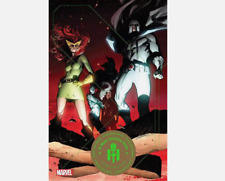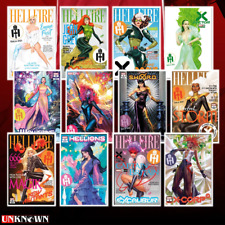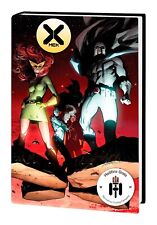Acta Est Fabula (FFX2, Vegnagun's attack): Latin for 'The Play is Over'.
Aeon (FF10, term for summon): "Aeon" or "eon" is a very long period of time. In Gnosticism, Aeons are emanations from the Godhead, and somewhat reminiscent of the Sephiroth in Cabalism.
Aestus (FFX-2, ability): This means "passionate fire" in Latin. May also mean "summer".
Almagest (FF5, Neo-Exdeath's attack): About a thousand years ago, Ptolemy wrote a book about astronomy, and when it was translated into Arabic, they called it the Almagest ('al' is Arabic 'the', and 'magest' comes from Greek; the whole thing means 'the greatest'). But it was hardly the greatest, since it put Earth at the center of the solar system. In fact, the original edition was located in the Great Library of Alexandria, just like FF5's Library of Ancients.
Argent, Inc. (FFX2, term): Argent, Inc., one of the companies vying for control of the Calm Lands tourism industry, comes from the Latin word "argentum", meaning "silver" or "money".
Aurochs (FF10, term): The Besaid Aurochs take their name from a type of seashell. This can be seen in the Auroch's logo.
Avatar (FF11, term for summon): In Hinduism, an avatar is an incarnation of a god; especially when speaking of Vishnu.
Bells (various, weapon type): In an Anglo-Saxon myth, bells are effective in the driving away of evil sprits because when they're rung, the holy essence of the metal is released through the sound waves. The larger the bell, the better able it is to shatter the dark energy in evil spirits.
Berserker (various, job): In Norse it means 'bear shirt'. They were viking warriors with strong ties to Odin, who whipped themselves into a muderous fury before battle. This state may have been caused by drugs (most likely the fly agaric mushroom) or alcohol, or by ritualistic behavior (like drinking bear or wolf blood) or just frenzied dance or other similar behavior. They often wore suits made from bear fur, giving them their name, and often the delusion that they were or were possessed by bears (although this may have been a purely psychological tactic they used on themselves to convince themselves to be even more rageful). This is also why the Berserker class in FF5 is dressed in animal skins.
Blitzball (FF10/X2, term): The term Blitzball first appeared in A Separate Peace, by John Knowles, though the definitions for the two terms are unrelated.
Blue Narciss (FF9, boat): The name of the vehicle most likely comes from the Greek myth of Narcissus who as a punishment for falling in love with the nymph Echo, was forced to fall in love with his reflection in a stream and eventually transformed into a flower bearing his namesake. The blue part of the boat's name is likely due to the fact the sails are blue.
Cantus Firmus (FFX2, Songstress ability): This is supposed to be Latin for "Solid Song", but it's not grammatically correct. It should be "Canta Firma". It is a type of melody in which counterpoint is added to to create an elaborate fugue.
Chakra (various, ability): A "chakra" is any one of the seven psychic centers of the body representing passion, pleasure, majesty, love, purity, inner sight, and thought. They occur wherever twelve lines of force in the body meet. Derives from ancient Eastern philosophy.
Charon (FFX2, Dark Knight ability): In Greek mythology, Charon ferried souls to Hades over the river Styx. Charon is also a Hebrew word meaning 'rage' or 'wrath'.
Chocobos (various, term): Might have gotten their name from a chocolate candy which sold in Japan a few years back (and is still popular). It was called "Chocoballs" and had a picture of a bird on the front. But unfortunately the bird looks nothing like the familiar yellow chocobo that we all know and love...
Coin Toss (FF6, Gambler ability): Lets you throw coins, obviously. But originally it was named "Heiji no Jitte" (Heiji's Jitte) in Japanese. Heiji was a fictional character who threw coins at his enemies, like Setzer. A jitte, is a weapon that looks like half a sai, and acts like a sort of "sword catcher". It was a tool used by Japanese police officers to catch and deflect swords of enemies. Street Fighter II fans will notice that Sodom uses the hilariously unsuitable jitte for fighting. In FF7 JP, it was coded as 'Law', as an inside joke meaning that paying lawyers is throwing away money. Square was having legal troubles at the time. It was finished and activated for the English version. In FF5 Advance, this was renamed to Zeninage.
Comodin (FFU, term): The resistance faction from Final Fantasy Unlimited can easily be explained as follows: 'Comodin' literally means 'Joker' in Spanish (as in the card). However, 'comodin' is also used to refer to the wild card in a card game. A wild card, as most everybody knows, is an element that can either enhance or severely cripple someone's game, but isn't the deciding factor therein. This, I believe, ties in with Comodin's functions in FFU's story--they either help or hamper the heroes of the series, but don't really affect the outcome of the story.
Corpus Invictus (FFX2, key item): This means "unconquerable body" in Latin.
Type D Equipment (FF7, term): In Dio's Show Room at the Gold Saucer, there are some useless and apparently meaningless artifacts on display. Two of them, though, could be significant. One is the Type D Equipment, which also shows up in the anime Evangelion, and another is Klein's Pot. It's called Klein no Tsubo in Japanese, which does literally mean Klein's Pot, but could be referring to the Klein Bottle, which is a three-dimensional analogue of the Mobius Strip.
Dies Irae (FFX2, Vegnagun's attack): Latin for "Judgement Day" or "Day of Wrath". Dies Irae was the name of a movement or section of Mozart's requiem mass.
Dirty Dancing (FFX2, Songstress ability): Comes from a famous movie.
Doomsday (FF9, Vivi's ability): In the Japanese version, this was Jihad. See Summons (Jihad).
Dreadnaught (FF2, ship): The Dreadnought was a British Navy Warship commisioned in the early 1900s (1902 I think). It also refers to any large warship with powerful gun turrets.
Eidolons (FF9, term for summons): A phantom, apparition, or image of an ideal. From the Greek 'eidolon', from eidos, meaning form.
El Niño (FF6, Mog's dances): Literally, 'the boy' in Spanish. But it also refers to a kind of current which creates tropical storms, which makes a lot of sense since it's part of the Water Rondo.
Enterprise (various, ship): Named after Star Trek's Enterprise.
Espers (FF6 & FF12, term for summons): Esper itself is a made-up word, but it might be related to "hope" (from French; 'a hope' is 'un espoir') or someone who has extra-sensory perception (an ESP-er). The word was used in this connotation in a story called "The Demolished Man", by Alfred Bester, serialized in Galaxy magazine. It was also mentioned in "Solar Lottery" by Philip K. Dick, and "Highways In Hiding" by George O. Smith.
Esuna (various, White magic spell): The suffix '-na' means to undo something. This word usage has come into more frequent use with FF11, but other games have used it before. For example, Poisona removes poison. The 'esu' part is something of a mystery though, but 'esu' could mean the letter 'S' which also stands for 'Status'. So it could mean 'Undoes status', since it removes most status effects.
Gargant (FF9, animal): Derived from the word gargantuan, meaning huge (seeing as how it's a huge bug).
Genome (FF9, term): Genome is a biological term used to describe the genetic information in a somatic cell.
Gil (various, term): Probably comes from "gilda", Old English for "golden".
Grand Train (FF6, Lore skill): Grand Train may have been mistranslated/misspelled from the term 'Grand Trine'. Obviously Grand Train in FF6 looks more like some cosmic triangle than any train-related spell. A grand trine on the otherhand is a formation of a trinagle between three celestrial bodies in the heavens, an important aspect that is supposed to be beneficial. This is also seen in the Blue Magic spell 'trine' in FF7.
Grand Cross (FF5, Exdeath's attack): Some say at the the end of the world, the heavenly bodies will align in the form of a huge cross. Quite fitting for one of the final boss' attacks.
Hayate (FFX2, Samurai ability): "Hayate" is Japanese for "storm gust" or "storm gale".
Helios Guard (FFX2, garment grid): In Greek mythology, Helios is the god of the sun.
Hilda Garde (FF9, airship): This is "Battle Glorious" in German, and "Defending Battle Maiden" in Teutonic. May be derived from the name Hilda Gadea, the wife of Argentine revolutionary leader Che Guevarra. See also Hilda (FF2).
Hiryuu (FF5, term): "Flying dragon" in Japanese.
Hokuten (Tactics, ???): Japanese for Northern Sky.
Kamaitachi (Tactics, ???): This was the name of a monster in Japanese legend. It is said to look like a weasel, and move quickly. They usually assault their prey as a team of three.
Karateka (FF3, Job): Student of karate.
Kozuka (FF10, Yojimbo's attack): Yojimbo's regular attack. This is the name of a small Japanese dagger.
Lacrimosa (FFX2, Vegnagun's attack): Latin for "Flowing Tears".
Lagomorph (FF6, animal): All of the non-winning combinations in Setzer's "Slot" result in "Lagomorph"; a rabbit that runs onto the screen and
gives the characters some HP. Lagomorphia is an order in biology which contains rabbits. So it's just a fancy name for "rabbit". In Japanese, this is called "Mysidian Rabbit", like the city in FF2 and FF4 and the Animal ability in FF5.
Lilliputian (Tactics, species; FF5 song): This term comes from Gulliver's Travels, where it was the name for a race of miniature people.
Lord Avon (FF9, character): The writer of "I Want To Be Your Canary". Stratford-upon-Avon is Shakespeare's birthplace.
Ma'at's Feather (FFX2, ability; FF11, character): Ma'at is an Egyptian god of truth and balance. When someone died, their heart would be weighed on one side of a scale, and the other side would contain Ma'at's feather. If the heart was free of sin, it would weigh less than the feather.
Maester (FF10, term): 'Maester' is a combination of 'master' and 'maestro' (which is Italian for 'master) and is also widely used for symphony conductors.
Megiddo Flame (FF8 & FF10, Chimera ability): According to the Bible (the Book of Revelations I think) Megiddo is a mountain range where the final battle between good and evil is supposed to take place; we get the word 'armageddon' from this.
Memento Mori (FFX2, Vegnagun's attack): Latin for "Remember that you Will Die".
Merton (FF6, spell): This is a mistranslation of Meltdown (a spell from FF8 that brings vitality down to 0).
Mobius Crest (MQ, ???): This crest is in the design of a Möbius Strip, which is a one-sided object. To make one, take a thin strip of paper. Give one end a half-twist, and tape it to the other end. Now trace a line down the center of the strip, and notice that you can do this without lifting your pencil up. This is because it only has one side! It was discovered about two hundred years ago by the German mathematician August Möbius, and it's the symbol for infinity.
Moogles (various, species): Called "Moguri" (or "Mogli") in Japanese, and that comes from a combination of the Japanese words "mogura" (mole) and "koumori" (bat). And doesn't Mog look like a mole with little bat wings? :)
Moomba (FF8, species): "Moomba" is a 40,000-year-old Australian aboriginal word, for "let's get together and have fun".
Mors Certa (FFX2, Vegnagun's attack): Latin for 'Death is Certain'.
Mu (FF5, term): Mu was supposed to be a lost continent of sorts that was rumored to exist somewhere around Polynesia. Because Mu has been proven to not exist, just the word "Mu" has come to mean "nothingness" or "nonexisting". "Mu" is also a Zen Buddhist principle referring to nothingness, and has been incorporated into the Japanese language to mean "nothing".
Nanten (Tactics, ???): Japanese for Southern Sky.
Nautilus (FF3, ship): The submarine Nautilus comes from Jules Verne's 19th century science fiction novel 20,000 Leagues Under the Sea. The Nautilus is an actual type of mollusk similar to a spiral-shelled squid or octopus.
Nemo Ante Mortem Beatus (FFX2, Vegnagun's attack): Latin for "No One is Happy Before Death".
Noli Me Tangere (FFX2, Vegnagun's attack): Latin for 'Touch Me Not'.
Odi Et Amo (FFX2, Vegnagun's attack): Latin for "I Hate and I Love".
One Winged Angel (FF7, song): Some of the lyrics in Sephiroth's final theme in FF7, 'One Winged Angel', come from Carl Orff's Carmina Burana. "Estuans interius, ira vehementi" (track 12 on most CDs), "Veni, veni, venias; ne me mori facias" (track 21) both show up verbatim during the Sephiroth battle! The rhythm is entirely different -- both pieces have a playful sound in Orff's composition as opposed to the intensity of FF7's final battle -- but those lines, and perhaps several others, are the same. "Sors immanis, et inanis" is from the song "O fortuna" in the same album.
Onion Knight (FF3, job): Onion is slang in Japanese for "Poor". So basically, Onion Kid means Poor Kid.
Ophiuchus (FF9, term; Tactics, term): The thirteenth Stellazio, and Serpentarius was similarly the thirteenth Zodiac Stone in FF Tactics. They're related. Ophiuchus is a constellation depicting the Snake Holder (in fact, that's what the word means), and Serpens is one depicting the Snake. Ophiuchus actually is *among* the Serpens constellation; it divides it in two. Since it crosses the ecliptic, it can indeed be considered a zodiac sign like the other twelve. It comes between Sagittarius and Scorpio, placing proper Serpentarian birthdays sometime around November.
Pale Horse (FF7, Sephiroth's attack): This probably refers to 'Death on a Pale Horse', a 1905 painting by Ryder. It is more likely a reference to the Revelation of St. John, the last book in the Christian Bible. ("When he broke the fourth seal, I heard the voice of the fourth living creature cry out, 'Come Forward.' I looked, and there was a pale horse. Its rider was named Death, and Hades accompanied him." Rev. 6:7-8) The original spell in Japanese was called "Pyro Holes". The Japanese phonetic spelling of Pyro Holes is "Pa-i-ro Ho-ro-su" which may be why the word was mistranslated.
Pallida Mors (FFX-2, Vegnagun's attack): Latin for "Pale Deaths".
PHS (FF7, key item): FF7's Party Hensei System (PHS) item shares initials with the Personal Handiphone System, an kind of cellular phone in Japan. Thus the cell-phone beep when you call your teammates. Japanese FF7 players will get the joke right away, but it's too obscure over in the U.S.
Prima Vista (FF9, ship): The name of Tantalus's theatre ship in FF9, is Latin for "first view" or "first sight".
Pyreflies (FF10, term): This is basically synonymous with "fireflies", and in Japan, fireflies are usually associated with the spirits of the dead.
Quarter Pounder (FFX2, Gunner ability): This ability reduces the target's HP to a quarter and the name comes from a McDonald's sandwich.
Quu (FF8, species): Comes from the Japanese word "kuu", "to eat", which makes sense to me.
Ragnarok (various, term): "Ragnarok" refers to the end of the world in Nordic myths. It's like the day of reckoning in which all are judged for their actions. The gods knew that someday they would have to battle their nemeses, the giants. Odin and many of the gods are killed (Odin is eaten by Fenrir) and a new world rises from the old world's ashes. In fact, in one version of the story it's Siegfried and Brunnhilde who repopulate the world.
Raijin (FF4 JP, ninja magic spell): See Characters.
Renzokuken (FF8, Squall's limit break): Japanese for 'continous slice' or 'repeated sword'.
St. Elmo's Fire (FF7, attack; Tactics, item): It refers to a weather phenomenon at sea where things appear to glow. This makes sense in FF7 (where it's an attack by a ghost ship) but not in FFT, where it's said to be some kind of disease. This may be a mistake and they meant to use St. Anthony's Fire, which is a real inflammation.
Selene Guard (FFX2, garment grid): In Greek mythology, Selene is the goddess of the moon.
Shamshir (FF6, enemy skill): See Items.
Shinra (FF7, term; FF10, character): (Also called Shin-Ra) Probably of Egyptian origin, translates into 'Dark God' and is used to describe a mythological creature similar to a vampire. Shin-Ra, Inc. is evil, hungers for power and seeks total world domination- hence 'dark god'. (Barret: "[Mako energy]'s the life blood of the planet. But Shinra keeps suckin' the blood out with these machines.")
Shin-Zantetsu (FFX2, Samurai ability): This is Japanese for "True Iron-Cutter".
Shumi (FF8, species): Japanese for "hobby", "tastes", or "preferences". Makes sense considering that they're named after their vocation.
Sister Ray (FF7, term): The Sister Ray cannon may be a reference to the song "Sister Ray" by the Velvet Underground, a 17-minute-long mostly-improvised dirge about sex, drugs, violence, and other wholesome things, from their 1967 album White Light/White Heat.
Slab (FF1, item): You need the slab so that Dr. Unne can translate the Lefeinish/Lufenish language. In the original Japanese FF1, that item is called 'rozetta ishi', or the Rosetta Stone, a stone slab found in 1799 by French soldiers near the town of Rashid (known as Rosetta in French). It had a message written in Greek, Egyptian hieroglyphics, and demotic (Egyptian cursive writing), and in 1828, Jean Champollion used it to translate the Egyptian language for the first time.
Solution 9 (FF9, Zidane's ability): There is a White Zombie song called "Real Solution #9" which is about destruction. Destroy is exactly what Zidane's limit attack does. A pretty big stretch, but fun to think about at the same time.
Tantalus (FF9, term): The band of thieves takes its name from a Greek mythological figure of the same name. Tantalus was a king who was one of Zeus's sons and was allowed to eat ambrosia. He angered the gods by allowing other mortals to eat ammbrosia, and was condemned to be up to his neck in water in Hades; whenever he wanted a drink, the water would lower, and he couldnt get one. Above him in Hades was a fruit tree; whenever he was hungry, the branches would pull away from him. (This is where the word 'tantalize' comes from.) In another version of the story, he kills his son and serves him as the main course in a banquet for the gods which angers them, but his punishment is the same. I know that the myth of Tantalus doesn't really relate to Zidane and his wacky bunch (well, I don't see a connection, anyway) but then again what did the word AVALANCHE have to do with Barret's
anti-Shinra crusade? Tantalus can also be spelled "Tantarus" in Japanese. Well, check on Google for sites on something called "NERO". It's a type of real-life roleplaying where characters actually use foam weapons to act out their roles. Anyway, one of the stories in NERO involves a greedy guy named Tantarus who kidnaps a princess. Sound familiar? 8-) And it'd also explain why Benero, Genero, and Zenero all have "nero" in their names. The entry on Baku makes the Nero reference make even more sense: the Bacchus theatre was renovated under the command of Roman emperor Nero.
Taoist (Tactics (JP), job): This was called Geomancer in NA version. Taoism is a religion from the far east where they respect nature. Taoists believe in a system called feng-shui. Feng-shui is how and where you position yourself, there's an outcome. Feng-shui literally translates to wind and water, but feng-shui really means geomancy since it has a lot to do with the earth. To see an example of a Taoist priest and bad feng-shui, watch the movie Mr. Vampire.
Templar (FFTA, job): See Monsters.
Totema (FFTA, term for summon): Most likely dervied from totems (i.e poles) - an object such as an animal or plant serving as the emblem of a family or clan especially among American Indians.
Trine (FF7, enemy skill): See Grand Train.
Tsviets (FF7:DoC, term): Russian for 'colors'.
Turks (FF7, term): During the 20th century, a New York vice crime group known as the Turks were an active organization. This could relate to the vice, mafia-like actions of the Shin-ra Turks.
Ultima (various, term): This word is Latin for "last" or "final". The English word "ultimate" comes from the same root, as does the English word "ultima", meaning the last syllable in a word.
Vajra (FFX2, ability; FFTA, sword): This is the thunderbolt of Indra, the Hindu thunder god.
Veldt (FF6, place): A grassy plain with a few shrubs, usually found in Africa, is called a veld or veldt. It's derived from the Dutch for 'field', and came into English by way of Afrikaans. For example, former president Roosevelt's name means 'rose-field'.
Victor Primoris (FFX2, key item): This means "foremost winner" or "first winner" in Latin.
Vita Brevis (FFX2, Vegnagun's attack): Latin for 'Brief Life'.
Wakizashi (FF10, Yojimbo's ability): A short Japanese sword. It was a kind of "side arm" emergency sword, and merchants who couldn't get sword liscenses carried them as well. When ronin leave their clan, they give up their katana. Once they do that, they're only left with a wakizashi, hence Yojimbo's attack. He has no katana to attack with, otherwise i'm sure he would use it.
War of the Lions (Tactics, term): The backdrop of FF Tactics, the War of the Lions, sounds a great deal like the War of the Roses. Here are the basics. King Edward III of England died without appointing an heir, and a fight broke out between the Yorkists (White Rose) and the Lancasterists (Red Rose) over whom would be the one to succeed the throne.
Zanmato (FF10, Yojimbo's ability): This is Yojimbo's instant-death Overdrive ability. Moogle Fan says it means "Demon Edge" or "Demon Cutting Sword". This may be a reference to the manga/anime "Lone Wolf and Cub", which features a technique called Zanmato; in addition, the aforementioned Cub is named Daigoro.
Zantetsu (FFX2, Samurai ability): This is Japanese for "Iron-Cutter". Note that Odin's ability, Zantetsuken, has been translated as "Steel-Bladed Sword" in FF7.
Zantetsuken (various, term): Odin's sword technique in various games. It's Japanese for "Iron Cutting Sword" or (as translated in FF7) "Steel-Bladed Sword". This may be just a Japanese take on Excalibur, whose name in a debased form of Celtic means "the iron/steel cutting sword".
X-Men: Hellfire Gala-The Red Carpet Collection OHC $15.00 X-Men Hellfire Gala #1 First Print Arthur Adams Ratio Variant 1:25 Emma Frost NM $25.00 WOLVERINE #37 [FALL] UNKNOWN COMICS DAVID NAKAYAMA HELLFIRE EXCLUSIVE VAR (09/20 $18.00 🔥 X-MEN HELLFIRE GALA 2023 #1 NAKAYAMA EMMA FROST Trade Dress Variant. NM $6.00 UNCANNY X-MEN # 134 - (NM+) -DARK PHOENIX-HELLFIRE CLUB-newsstand $175.00

JEAN GREY #1 [FALL] UNKNOWN COMICS DAVID NAKAYAMA HELLFIRE EXCLUSIVE VAR (08/23/
$18.00
WOLVERINE #37 [FALL] UNKNOWN COMICS DAVID NAKAYAMA HELLFIRE EXCLUSIVE VIRGIN VAR
$33.00
X-Men: Hellfire Gala Red Carpet Edition
$20.99
HELLFIRE GALA UNKNOWN COMICS VARIANT EVENT 12 PACK BUNDLE (05/18/2022)
$83.00
X-men: Hellfire Gala Red Carpet Edition by Jonathan Hickman (English) Hardcover
$37.97
 Characters
Characters Places
Places Stories
Stories Species
Species Organizations
Organizations Glossary
Glossary Transportation
Transportation Monsters
Monsters Jobs
Jobs Summons
Summons Items
Items Magic/Skills
Magic/Skills Weapon Types
Weapon Types In-Crossovers
In-Crossovers Ex-Crossovers
Ex-Crossovers Release Dates
Release Dates Name Origins
Name Origins Famous Moments
Famous Moments Music Database
Music Database Features
Features Game Help
Game Help Game Evolution
Game Evolution Square Art
Square Art Fan Flash
Fan Flash Final Fantasy Forums
Final Fantasy Forums Updates
Updates Site Info
Site Info Feedback
Feedback Full Index
Full Index Links
Links Staff
Staff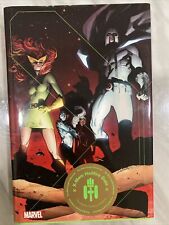
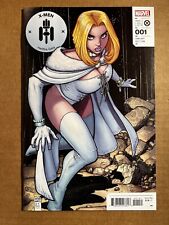
![WOLVERINE #37 [FALL] UNKNOWN COMICS DAVID NAKAYAMA HELLFIRE EXCLUSIVE VAR (09/20 picture](/store/img/g/IIwAAOSwrnllW9Pb/s-l225/WOLVERINE-37-FALL-UNKNOWN-COMICS-DAVID-NAKAYAMA-HE.jpg)
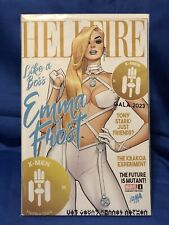
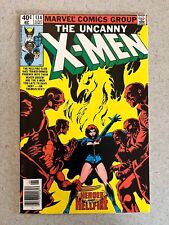
![JEAN GREY #1 [FALL] UNKNOWN COMICS DAVID NAKAYAMA HELLFIRE EXCLUSIVE VAR (08/23/ picture](/store/img/g/whwAAOSwj9llS87q/s-l225/JEAN-GREY-1-FALL-UNKNOWN-COMICS-DAVID-NAKAYAMA-HEL.jpg)
![WOLVERINE #37 [FALL] UNKNOWN COMICS DAVID NAKAYAMA HELLFIRE EXCLUSIVE VIRGIN VAR picture](/store/img/g/eu4AAOSwe4FlW9Pa/s-l225/WOLVERINE-37-FALL-UNKNOWN-COMICS-DAVID-NAKAYAMA-HE.jpg)
